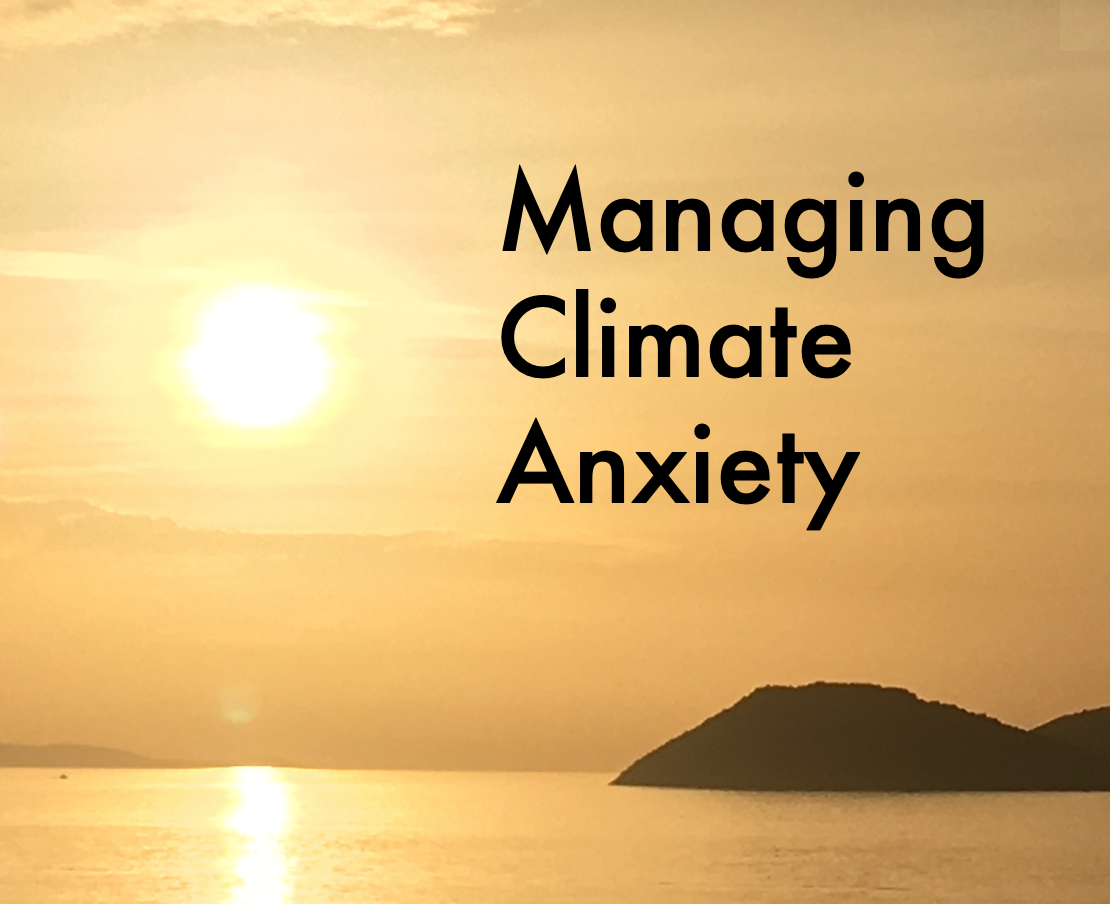 If you have anxiety about the changes happening in our climate, you’re not alone. For example, according to a 2021 study published in The Lancet and recently reported in an article in Nature, more than 40% of people in the U.S. aged 16-25 are very or extremely worried about climate change. But climate anxiety can affect people of every age, and concerns seem to be growing. That’s why I wanted to write this post, which covers:
If you have anxiety about the changes happening in our climate, you’re not alone. For example, according to a 2021 study published in The Lancet and recently reported in an article in Nature, more than 40% of people in the U.S. aged 16-25 are very or extremely worried about climate change. But climate anxiety can affect people of every age, and concerns seem to be growing. That’s why I wanted to write this post, which covers:
- An overview of how climate anxiety (also known as eco-anxiety, and I use the terms interchangeably) develops.
- A contrasting overview of how to manage climate anxiety proactively.
- Some tips for how you can begin to manage your own eco-anxiety.
- An introduction to a specific type of climate anxiety known as OCD environmental scrupulosity and tips for managing it.
Also, I’m excited to announced that this post is the first foray into a more sustained and comprehensive effort I’ll be launching in 2024 to help you productively manage climate anxiety. Sign up for my Shoulders Back! newsletter to stay tuned!
What is climate anxiety or eco-anxiety?
Climate anxiety or eco-anxiety, as defined in the Nature article, is “a chronic fear of environmental doom,” as well as negative feelings or distress related to worsening climate and/or environmental conditions. To further clarify, in this article I’m not discussing anxiety or other mental health symptoms that come from the trauma of having experienced a major climate disaster such as a wildfire, drought, hurricane, flood, tsunami, etc, and which can turn into post-traumatic stress disorder or PTSD, as that is a different mental health issue.
Like the climate crisis itself, climate anxiety is complicated, but here’s an overview of what the reactive cycle of unmanaged eco-anxiety often looks like:
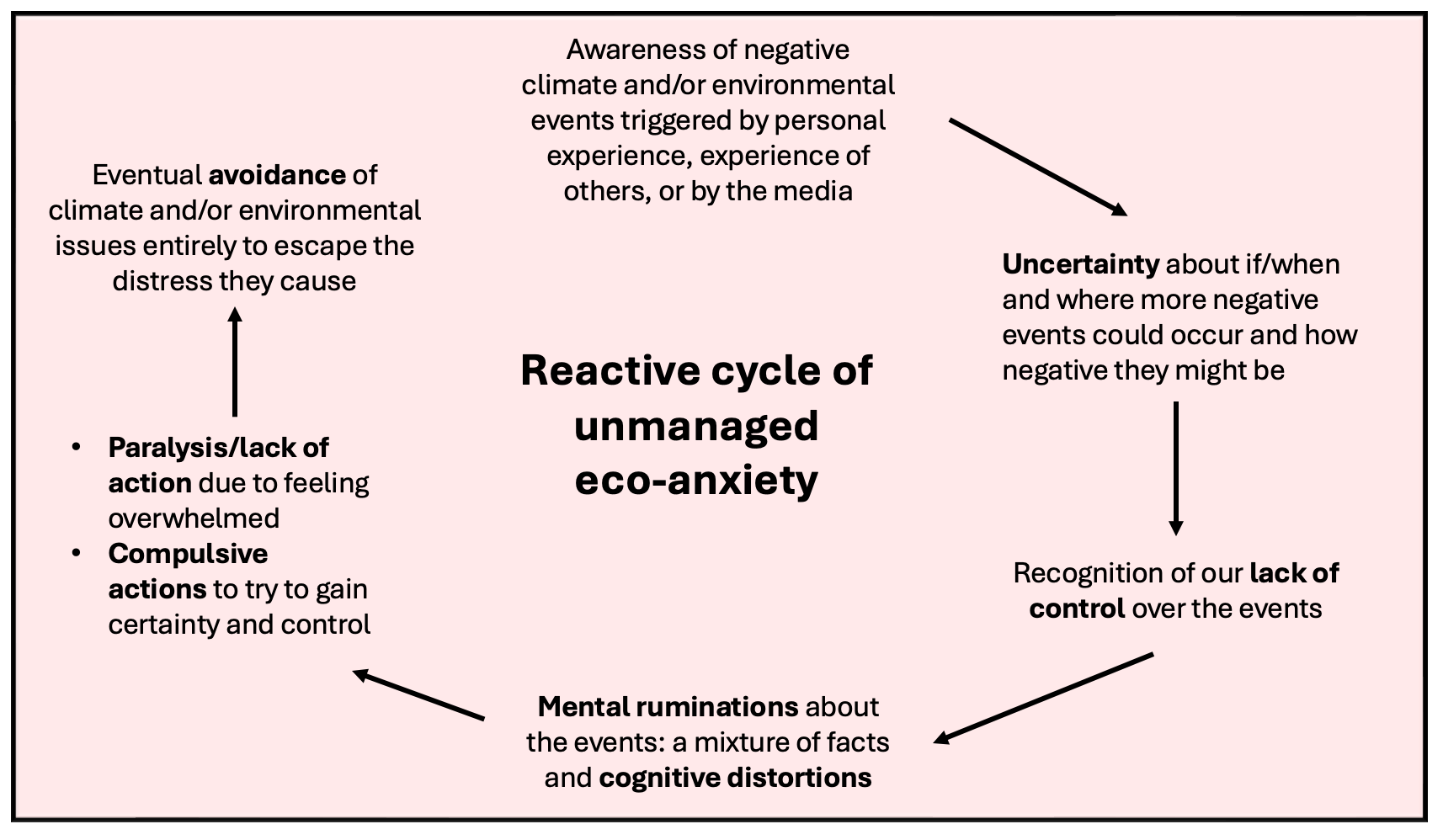
Like other anxiety cycles, this one is reactive and driven by uncertainty and lack of control. Our thinking then becomes distorted, leading us to become paralyzed or take compulsive actions. Because compulsive actions often feel like they’re not enough or ineffective, they can create feelings of powerlessness. These feelings can lead to an avoidance of the entire issue to escape the distress.
Managing climate anxiety or eco-anxiety
Well-managed climate anxiety or eco-anxiety looks much different, however, as illustrated in the following diagram:
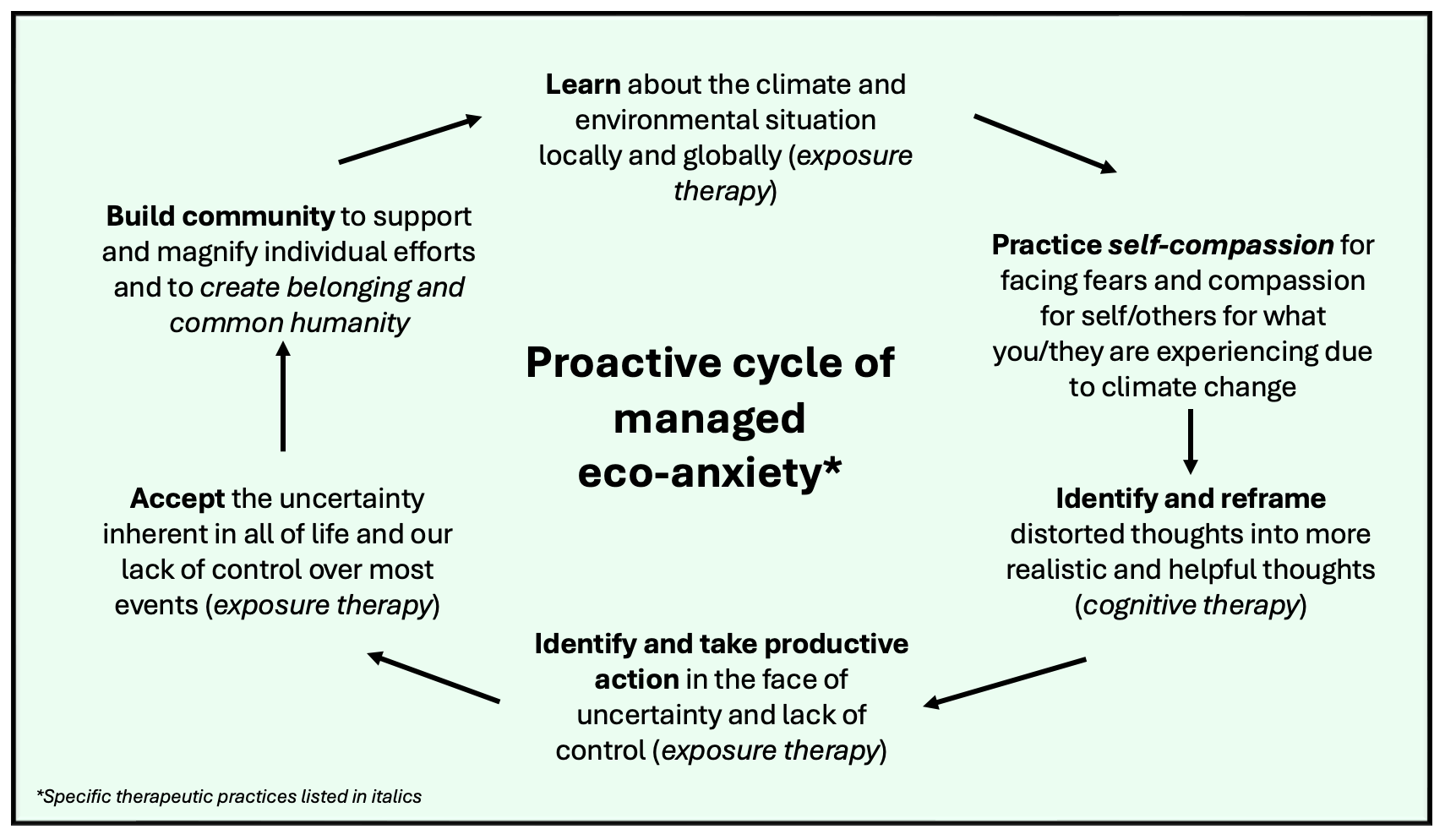
Notice that this is a proactive cycle. We’re actively facing fears about the climate/environment and identifying and reframing distorted thoughts. We’re taking productive action and building community in the face of uncertainty and lack of control.
I’ve italicized where particular therapies or therapeutic tools can come into play, including exposure therapy (learning how to face your fears and uncertainty), self-compassion (being nice to yourself), and cognitive therapy (changing your thoughts). Reaching out to others and building community are often used in many types of therapy, and creating common humanity is part of self-compassion.
Tips for managing eco-anxiety or climate anxiety
Understanding and managing climate anxiety is a journey that takes time. While the diagram above and the tips below aren’t going to magically make your eco-anxiety disappear, they will hopefully help you start your journey from feeling reactive and powerless to proactive and empowered.
- Remember you already know how to manage uncertainty: The goal of exposure and response prevention therapy, the evidence-based treatment for OCD, is learning to live in a world of uncertainty and be happy anyway. I’m not being glib! No matter what the climate is doing, we want to enjoy our lives the best we can, even though things might not be going as we’d like. And we know how to do this! For instance, every time you get into your car, you’re taking a risk, and yet we all do it everyday without a second thought. So you do know how to tolerate uncertainty when the risks are real—you can apply that same muscle to the climate situation.
- Start taking small actions that make you feel like you’re part of the solution, such as
-
- Throwing some of your clothes on a drying rack instead of putting them in the dryer.
- Combining errands so you’re using less gas.
- Turning your thermostat up or down 1 degree to save on energy.
- Making one meatless meal each week.
If you’re saying, “Yeah, but each of those things is a drop in the bucket, it won’t make any difference!” just think about if hundreds, thousands, hundreds of thousands, or millions of people made these types of changes. That would make a BIG difference. What you do does count.
- Focus on the wins. I’ve written before about the negative effects of seeing disaster after disaster covered on the mainstream media on your peace of mind. Instead, try focusing on the climate wins. I did a Google search on “news on climate wins” and tons of links came up with all sorts of uplifting stories. Even if the wins are small, over time they can turn into big victories.
- Seek professional help if you’re really struggling. Therapists who treat anxiety disorders and OCD and who use exposure and response prevention therapy would likely be able to help you with climate anxiety. You can learn how to find those types of therapists under the Other Treatment Options section of my FAQs page.
If you’d like even more inspiration, check out regeneration.org, based on Paul Hawken’s book Regeneration: Ending the Climate Crisis in One Generation.
Eco-anxiety, OCD, and compulsive climate-related actions
You don’t have to have OCD to get stuck doing compulsive climate-related actions. However, there is a subtype of OCD called environmental scrupulosity where people become overly focused on their impact on the environment and the climate. Often, people with environmental scrupulosity feel that there is an urgent need to do all they can do right now. They have a belief that their individual actions could have magnified negative environmental impacts if they don’t do everything just right. Examples include:
- Ensuring everything that could possibly be recycled is perfectly clean and in the right bins, so that entire truckloads of recycling aren’t “contaminated” and thrown away.
- Compulsive news checking to ensure disasters aren’t happening or to get all the details if they are.
- Not making future plans because of fears of a imminent doomsday
- Refusing to do things you need to do (grocery shopping or buying new clothes, for instance) because of the carbon impact they might have.
- Compulsively tracking your carbon footprint.
Believe it or not, if you have environmental scrupulosity, the exposure and response prevention (ERP, also know simply as exposure therapy) exercises often feel environmentally careless. Examples could be throwing away something recyclable or buying more new clothes than you need or deleting that carbon footprint app off your phone. “How could I suggest this?” you say, “when all of that can negatively impact the environment!” Easily, because if OCD is running your environmental efforts, you’re going to be anxious, exhausted, and miserable—and as an ironic result, in no position to effectively help the environment!
If environmental scrupulosity is hampering your life, I highly recommend finding an OCD therapist to help you do ERP. A therapist can help you break out of the OCD-fueled, reactive climate anxiety cycle so you can participate in effective environmental action and enjoy your life.
Learn more about taming OCD
To learn more about how I used ERP to face uncertainty and a lack of control, see Is Fred in the Refrigerator? Taming OCD and Reclaiming My Life. Click here to purchase a copy.
Sign up for my Shoulders Back! newsletter to receive OCD-taming tips & resources, including notifications of new blog posts, delivered every month to your inbox.
My blogs are not a replacement for therapy, and I encourage all readers who have obsessive compulsive disorder to find a competent ERP therapist. See the IOCDF treatment provider database for a provider near you. And never give up hope, because you can tame OCD and reclaim your life!
Photo of sunset near Split, Croatia © Shala Nicely.

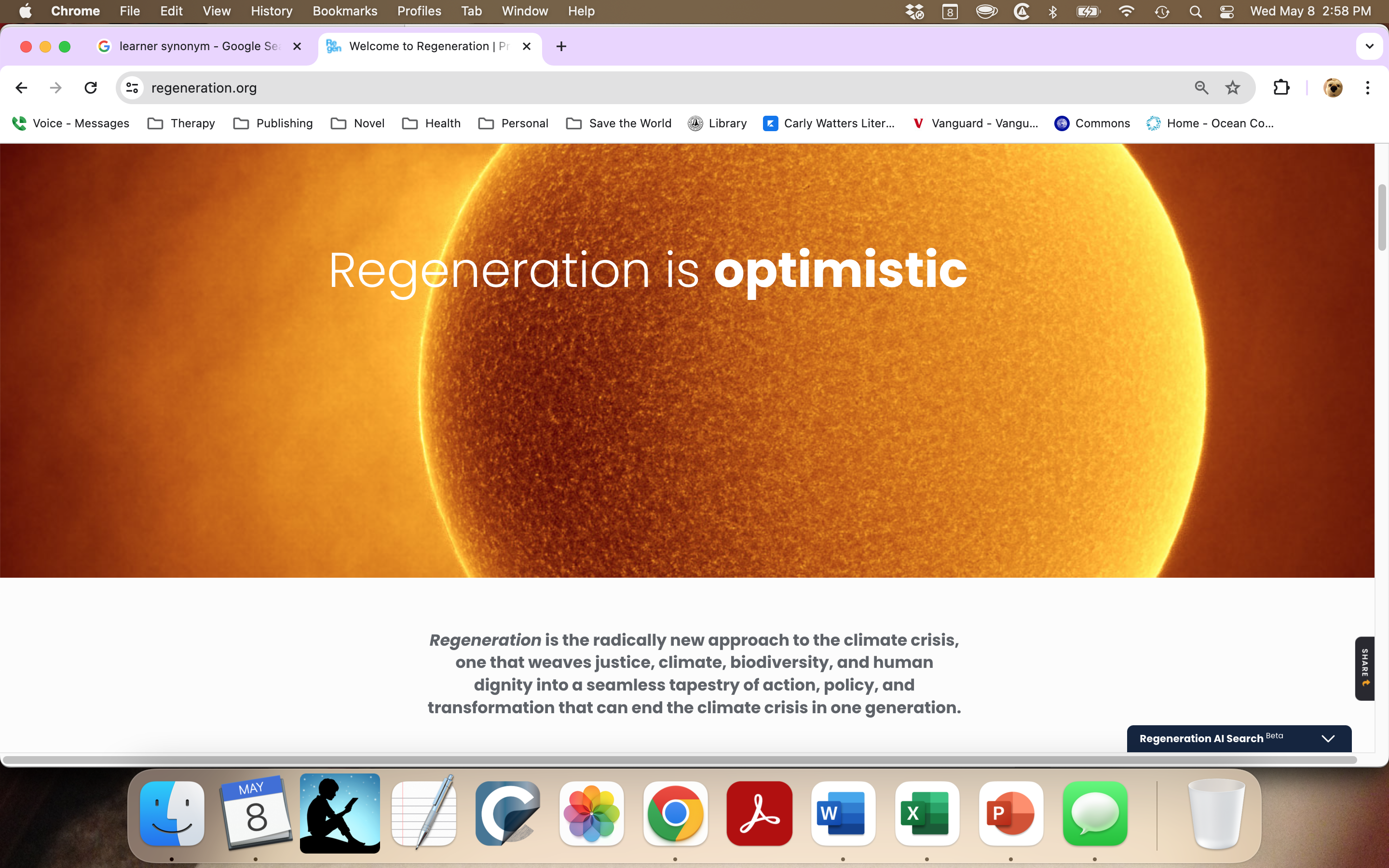


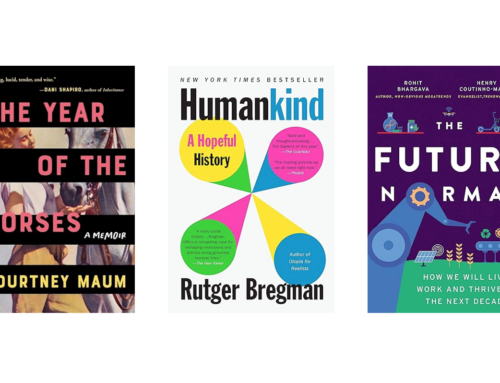

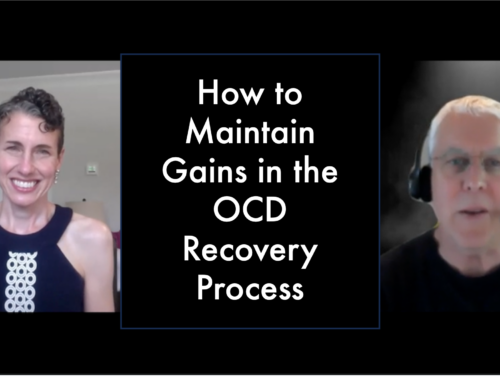
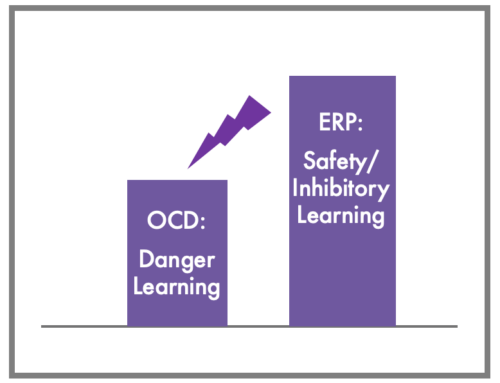
Leave A Comment